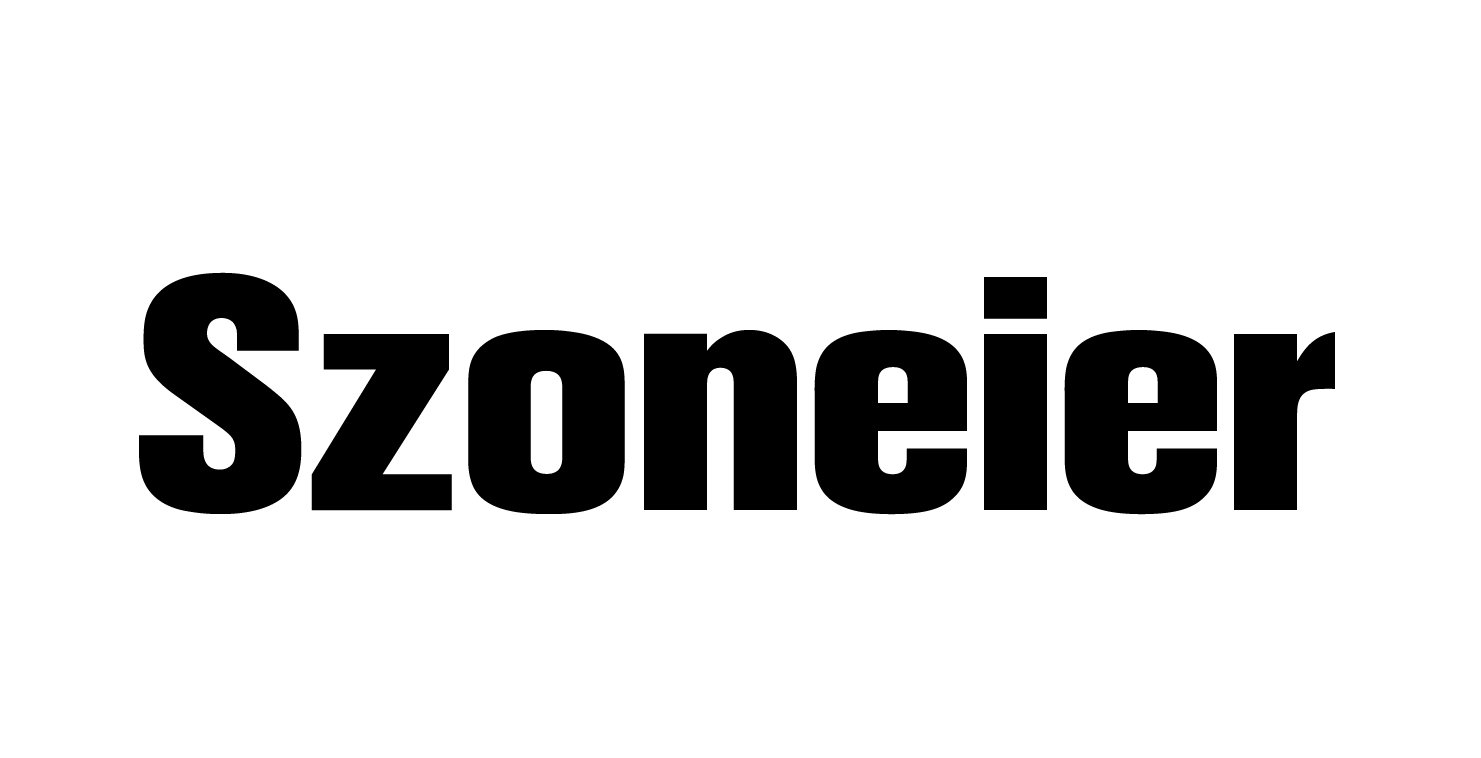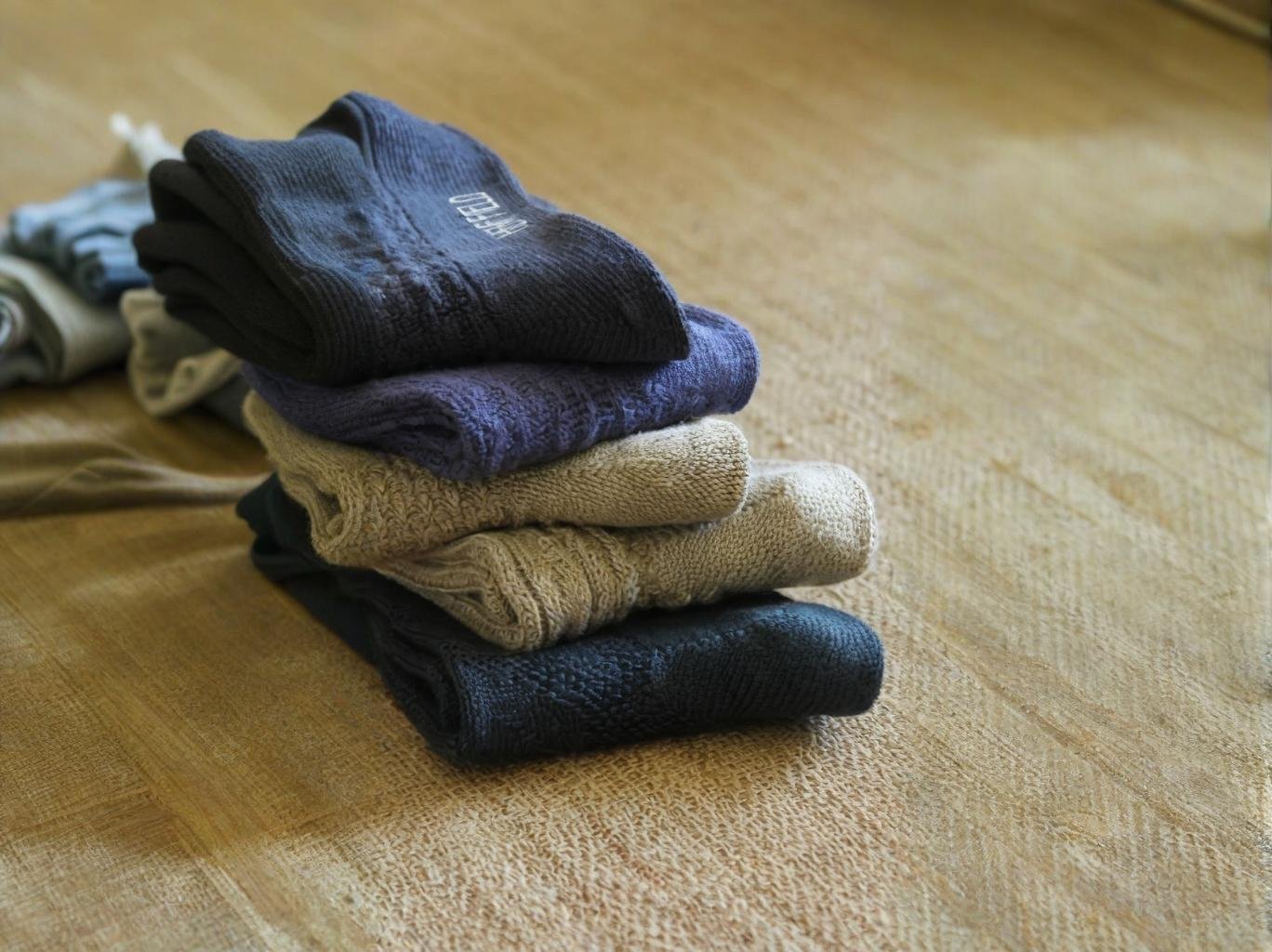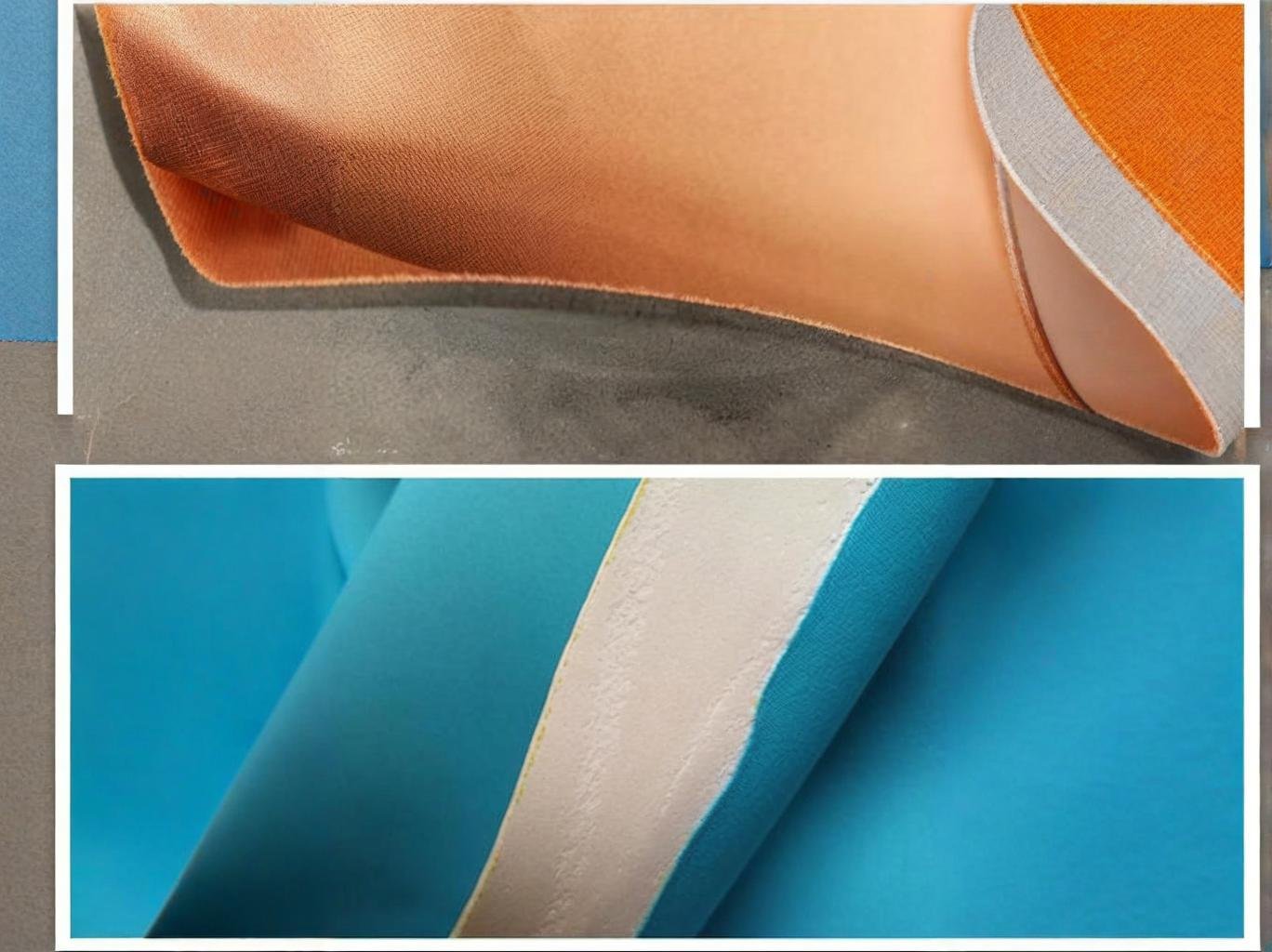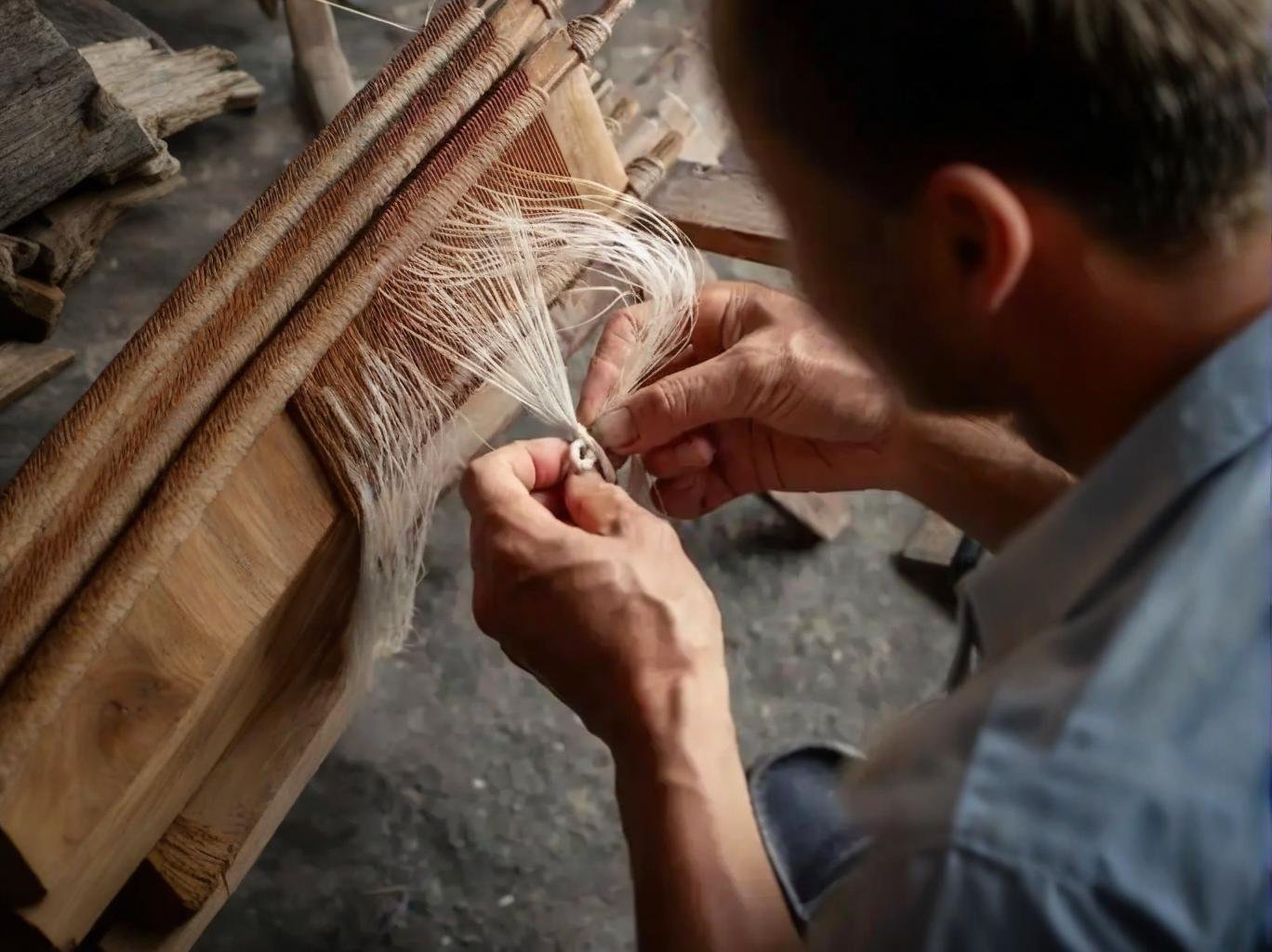How to Bond Fabric to Neoprene?
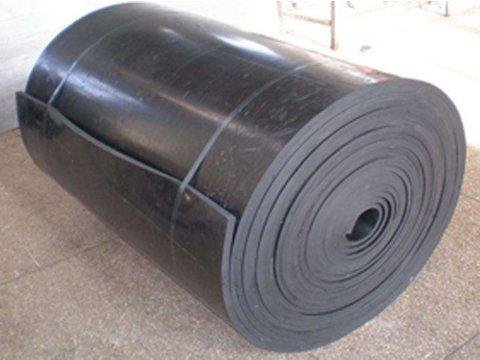
A Technical Guide to Lamination, Adhesives, and Manufacturing Best Practices
In the world of performance textiles and technical manufacturing, neoprene continues to hold a strong reputation for flexibility, insulation, and durability. But the real magic happens when it’s laminated with fabric—transforming spongy CR rubber into a functional material for wetsuits, bags, braces, laptop sleeves, and industrial covers. Behind that transformation is one critical but often overlooked step: how fabric is bonded to neoprene.
Fabric is typically bonded to neoprene using heat lamination or industrial adhesives. The chosen method depends on the type of fabric, neoprene thickness, application environment, and durability requirements. Adhesive bonding offers flexibility, while heat lamination provides uniform adhesion and long-term performance.
This step can make or break your final product. A U.S. luggage brand once faced a 12% product return rate due to fabric delaminating from the neoprene base after just two months in use. Their OEM supplier had used general-purpose adhesive on recycled neoprene—not suitable for outdoor environments. When they switched to heat lamination using polyester tricot and solvent-free polyurethane glue, not only did returns drop to under 1%, but the product lifespan doubled.
Let’s dive into the science, equipment, and sourcing knowledge you need to professionally bond fabric to neoprene—whether you’re in prototyping or mass production.
1. What Are the Common Methods Used to Bond Fabric to Neoprene?
The two most common methods for bonding fabric to neoprene are heat lamination and adhesive (glue-based) bonding. Both techniques create a composite material that is flexible, durable, and resistant to separation—but each serves different product needs and factory capabilities.
Fabric can be bonded to neoprene using heat lamination or adhesive bonding. Heat lamination uses thermal pressure, while adhesives involve PU or rubber-based glue application.
Methods, Advantages, and Material Compatibility
1.1 Heat Lamination
- Process: A thermoplastic adhesive layer is applied to the neoprene, and fabric is pressed under heat and pressure using rollers or plates
- Temperature Range: 120°C–160°C depending on the adhesive type
- Applications: Wetsuits, braces, water-resistant bags, consumer wearables
| Pros | Cons |
|---|---|
| Seamless and uniform adhesion | Requires industrial lamination equipment |
| Strong resistance to delamination | Limited flexibility for certain fabrics |
| Cleaner surface, no visible glue | High energy usage |
1.2 Adhesive Bonding
- Types of Glue Used:
- Polyurethane (PU) adhesives
- Chloroprene rubber adhesives
- Water-based contact adhesives (eco-friendlier)
- Application: Brushed or sprayed onto neoprene and/or fabric, followed by heat pressing or rolling
- Ideal For: Low-volume runs, prototyping, or specialty textures
| Pros | Cons |
|---|---|
| Flexible and suitable for complex shapes | Glue lines may be visible under light fabrics |
| Easier to adjust alignment | Solvent-based versions may emit VOCs |
| Suitable for low-temperature fabric | May require curing time |
1.3 Hybrid Bonding
Some factories combine both—using a thin glue film with mild heat and pressure to reduce risk of burning or distortion. This hybrid method is great for recycled fabrics or sensitive membranes.
1.4 Real-World Use Case:
SzoneierFabrics uses heat lamination for bulk neoprene fabric production (2mm–5mm CR foam) with nylon, polyester, spandex, and tricot fabrics. For small-batch or custom projects, we offer PU adhesive bonding for eco-labeled orders.
2. Which Types of Fabric Are Most Compatible with Neoprene Lamination?
The most compatible fabrics for bonding to neoprene are knit synthetics such as nylon jersey, polyester tricot, spandex, and mesh. These offer stretch, temperature stability, and strong adhesive compatibility.
Nylon jersey, polyester tricot, spandex, and mesh are the best fabrics to bond to neoprene due to their heat resistance, elasticity, and adhesive compatibility.
Fabric Characteristics That Affect Bonding
2.1 Nylon Jersey
- Features: Lightweight, smooth, slightly stretchy
- Compatibility: Bonds well with both heat lamination and PU adhesive
- Used In: Wetsuits, waist trimmers, laptop sleeves
2.2 Polyester Tricot
- Features: Slightly brushed texture, better moisture-wicking
- Bonding Advantage: Resists curling or distortion under heat
- Use Case: Fashion bags, thermal wear, gloves
2.3 Spandex/Elastane
- Feature: High stretch
- Challenge: Needs low-temperature lamination to avoid melting
- Recommendation: Use with low-melt PU film adhesive
2.4 Mesh and Spacer Fabrics
- Pros: Breathability, good for orthopedic or medical applications
- Note: May require double bonding or pre-compression to ensure contact
| Fabric Type | Best Bonding Method | Applications |
|---|---|---|
| Nylon Jersey | Heat lamination or glue | Sportswear, braces, diving gear |
| Polyester Tricot | Heat lamination | Bags, fashion, moisture-wicking gear |
| Spandex/Elastane | Low-temp heat lamination | Yoga wear, compression garments |
| Mesh | Adhesive or hybrid | Backing, breathable braces or gear panels |
2.5 Unsuitable Fabrics
Avoid:
- Cotton – Poor bonding performance and high shrinkage
- Silk or rayon – Easily scorched under heat
- Heavy canvas or leather – Causes peeling on flexible neoprene
2.6 Material Trial Tip:
Always perform a peel test after bonding. A good bond should stretch or tear the foam before the fabric separates.
3. How Does Heat Lamination Compare to Adhesive Bonding for Neoprene?
Heat lamination and adhesive bonding are the two most common methods for attaching fabric to neoprene. While both are effective, they differ in terms of bond strength, process complexity, production cost, and environmental considerations.
Heat lamination offers stronger, cleaner, and more durable bonding for neoprene, while adhesive bonding is better suited for lower volumes, complex shapes, or sensitive fabrics.
A Head-to-Head Comparison of Bonding Methods
3.1 Strength and Durability
- Heat Lamination:
- Forms molecular-level fusion between the adhesive film and both neoprene and fabric.
- Best for products exposed to friction, tension, or water (e.g. wetsuits, gym accessories).
- Adhesive Bonding:
- Relies on surface adhesion, which can peel under stress if not properly applied.
- Still sufficient for fashion bags, laptop sleeves, and consumer packaging.
3.2 Aesthetic and Clean Finish
| Factor | Heat Lamination | Adhesive Bonding |
|---|---|---|
| Surface smoothness | ★★★★★ | ★★★☆☆ |
| Glue visibility | None | Possible bleed-through |
| Seam finish | Seamless | May need trimming or topstitch |
3.3 Speed and Scalability
- Heat lamination is ideal for high-volume runs using automated roller or plate laminators.
- Adhesive bonding offers flexibility for small-batch production, especially for prototypes or custom color matching.
3.4 Temperature Sensitivity
- Heat lamination may damage sensitive fabrics like Lycra or PU-coated knits.
- Adhesive bonding allows bonding at room or low temperatures, making it more fabric-friendly.
3.5 Environmental and Safety Considerations
| Aspect | Heat Lamination | Adhesive Bonding |
|---|---|---|
| VOC emissions | None | Solvent-based glues may emit VOCs |
| Operator safety | Safer with automation | Requires ventilation or masks for glue |
| Waste generation | Minimal | May include leftover glue, cleanup waste |
3.6 Summary Table
| Metric | Heat Lamination | Adhesive Bonding |
|---|---|---|
| Bond strength | High | Medium |
| Setup cost | Higher (laminator needed) | Lower (manual tools possible) |
| Ideal volume | Medium to high | Small to medium |
| Flexibility (shapes) | Medium | High |
| Eco-friendliness | High | Varies by adhesive type |
3.7 Real-World Use Case
A neoprene swimwear brand tested both methods for 2mm laminated CR fabric:
- Heat-laminated nylon tricot stayed bonded after 100 machine washes.
- Adhesive-bonded versions began to peel after 40 washes in high-friction zones.
4. What Adhesives Work Best for Bonding Fabric to Neoprene?
The best adhesives for bonding fabric to neoprene include polyurethane (PU) glue, chloroprene-based contact adhesives, and water-based glue systems. The right choice depends on application temperature, flexibility, environmental conditions, and fabric type.
Polyurethane (PU) glue, chloroprene adhesives, and water-based contact adhesives are best for bonding neoprene to fabric. PU offers strong, flexible, water-resistant bonds.
Exploring Bonding Chemistry and Use Scenarios
4.1 Polyurethane (PU) Adhesives
- Properties: High flexibility, strong bonding, excellent water and UV resistance
- Use Cases: Sportswear, outdoor bags, medical gear
- Application: Spray, brush, or roll-on; often followed by hot pressing
| Pros | Cons |
|---|---|
| Flexible, durable, non-yellowing | May require curing time (12–24 hours) |
| Strong chemical and temperature tolerance | More expensive than basic adhesives |
4.2 Chloroprene Rubber Adhesives
- Properties: Fast tack, strong bond with rubber surfaces
- Use Cases: Technical gear, neoprene sheeting, construction products
- Notes: Can be solvent-based or water-based
4.3 Water-Based Adhesives
- Eco-friendlier alternative to solvent glues
- Great for light-duty bonding (e.g., sleeves, cosmetic bags)
- May require longer drying time and pressure curing
4.4 Hot Melt Adhesives (Film Type)
- Thermoplastic PU films are commonly used in heat lamination
- Provide clean, solvent-free adhesion
- Preferred for mass production lines with consistent heat & pressure
4.5 Recommended Adhesive Brands (Industrial)
| Brand | Adhesive Type | Notable Products |
|---|---|---|
| Henkel | PU & water-based | Purmelt®, Technomelt® |
| Sika | CR and PU adhesive | Sikaflex® industrial bonding |
| Bostik | Textile adhesives | Born2Bond™, Thermogrip® |
| H.B. Fuller | Film laminating systems | Swift®bond, HL Series |
4.6 Case Insight:
A German orthopedic product brand bonded 3mm neoprene with mesh using water-based PU glue. Post-testing showed 92% bonding retention after 30 wash cycles and minimal off-gassing—making it ideal for medical certification.
5. Do You Need Specialized Equipment to Laminate Fabric to Neoprene?
Yes, bonding fabric to neoprene—especially for consistent, industrial-grade quality—often requires specialized equipment such as roller laminators, flatbed presses, or spray booths. However, small-batch bonding can still be performed using basic tools with precision and care.
Fabric-to-neoprene lamination can be done with roller laminators, flatbed presses, or spray adhesive systems. Specialized equipment ensures uniform pressure and heat control.
Equipment Options for Different Production Scales
5.1 Roller Laminator (Heat Press Type)
- Function: Applies heat and pressure evenly across neoprene rolls
- Settings: Adjustable temperature (120°C–160°C), roller speed, and pressure
- Best For: High-volume production of wetsuit, bag, or brace materials
| Feature | Value |
|---|---|
| Bonding speed | 20–60 m/min |
| Roll width capacity | 1.2–1.8 meters |
| Output quality | Industrial-grade |
5.2 Flatbed Heat Press
- Function: Batch bonding of fabric panels with neoprene
- Best For: Custom-cut parts, small production runs, prototyping
| Pros | Cons |
|---|---|
| Precise control of time/temp | Slower than continuous laminators |
| Ideal for irregular shapes | Requires manual loading/unloading |
5.3 Spray Booths for Adhesive Bonding
- Purpose: Evenly apply PU or CR glue to neoprene sheets or fabrics
- Required: Ventilation, glue dilution control, heat curing unit (optional)
- Common in: Custom accessories, medical braces, R\&D labs
5.4 Small-Scale Tools for Low MOQ Production
| Tool | Use Case |
|---|---|
| Household iron + Teflon sheet | DIY bonding with hot melt adhesive film |
| Roller squeegee | Press fabric evenly during curing phase |
| Oven/heater box | Cures low-VOC adhesive films gently |
5.5 OEM Partnering Tip
If you’re outsourcing neoprene bonding, ask your supplier:
- Do you use continuous laminating or batch press?
- Can you support small MOQ (under 100 pcs)?
- Are your adhesives OEKO-TEX or REACH certified?
5.6 Case Study:
SzoneierFabrics invested in a dual-head roller laminator with adjustable temp zones for bonding delicate jersey to 2mm CR foam—achieving less than 1% defect rate across 30,000 meters/month.
6. How Do You Prevent Delamination or Peeling in Neoprene-Fabric Products?
Preventing delamination involves optimizing surface preparation, adhesive selection, bonding pressure, and curing time. Without these factors, neoprene composites may peel after stress, washing, or exposure to heat.
To prevent delamination, ensure clean surfaces, use the correct adhesive, apply uniform heat and pressure, and allow full curing time. Avoid overstretching seams during sewing.
Causes of Delamination and How to Avoid Them
6.1 Root Causes of Delamination
| Problem | Common Cause |
|---|---|
| Fabric lifting after washing | Incomplete curing or poor glue compatibility |
| Edge peeling after sewing | Weak pressure during bonding or unsealed seams |
| Bubble formation | Trapped air, improper roller tension |
6.2 Solutions That Work
- Surface Prep: Always clean neoprene of dust, oils, or moisture
- Preheat Neoprene: Warming the foam slightly improves glue absorption and lamination uniformity
- Apply Correct Pressure: Use calibrated rollers or press to avoid soft spots
- Use Edge Sealing Tape: Prevents fraying and separation during repeated use
6.3 Recommended Curing Times
| Adhesive Type | Cure Time (Full Bond) |
|---|---|
| Solvent-based PU | 12–24 hours |
| Water-based PU | 24–48 hours |
| Heat-activated glue film | 30 seconds to 5 minutes |
6.4 Post-Lamination Testing
- Peel Strength Test: ASTM D903 standard used to test adhesive quality
- Washing Simulation: Run 10–20 cycles at 40–60°C to evaluate seam integrity
6.5 Production Insight:
An Italian diving gear company improved neoprene-fabric adhesion by switching from contact cement to hot melt adhesive film, which reduced defect rate from 7.8% to 1.5% under long-term saltwater stress.
7. Are There Eco-Friendly or Solvent-Free Ways to Bond Fabric to Neoprene?
Yes. With rising demand for sustainable manufacturing, many factories are transitioning to solvent-free, water-based, or hot melt film adhesives that significantly reduce VOC emissions and environmental hazards. These options are not only safer but also compatible with OEKO-TEX and REACH compliance requirements.
Eco-friendly neoprene bonding uses water-based adhesives, solvent-free PU films, or biodegradable lamination agents—ideal for sustainable textile and medical products.
Sustainable Bonding Innovations in the Neoprene Industry
7.1 Water-Based Polyurethane (PU) Adhesives
- Key Feature: Low-VOC formulation with no toxic solvent off-gassing
- Applications: Medical supports, children’s wear, EU-compliant products
- Drying: Requires extended curing (24–48 hours) or forced-air oven drying
7.2 Hot Melt Film Adhesives (Thermoplastic PU)
- Structure: Solid-state adhesive film activated by heat and pressure
- Benefits:
- No drying or airing required
- Cleaner workspaces with no chemical odor
- Fully recyclable production waste
| Eco Adhesive Type | Bonding Process | Best Use Cases |
|---|---|---|
| Water-based PU glue | Brush/spray + cure | Medical textiles, soft goods |
| TPU hot melt adhesive film | Heat lamination | Bags, sportswear, eco product lines |
| Reactive PU dispersion | Spray + moisture cure | High elasticity composites |
7.3 Certifications to Look For
If eco compliance is your brand goal, ensure your supplier uses adhesives that support:
- OEKO-TEX® Standard 100 – Human ecological safety
- REACH compliance – Non-hazardous chemical registration (EU)
- Bluesign® or GRS – Sustainable textile and chemical use
7.4 Case Example:
SzoneierFabrics offers GRS-compliant, solvent-free bonding for rPET fabric laminated to CR neoprene. This was used in a Dutch brand’s anti-theft backpack project—resulting in 100% recycled outer material and certified glue-free lamination.
8. What Quality Control Standards Should Be Followed During Neoprene Lamination?
To ensure long-lasting, consistent, and compliant neoprene-fabric composites, quality control should include checks on adhesive application, temperature, pressure, peel strength, and post-lamination visual inspection. Global buyers often require documentation of bonding parameters and performance testing.
Neoprene bonding QC should include temperature, pressure, peel strength, visual checks, and certified adhesive use. ISO or ASTM standards may be required for export.
Building a Reliable Lamination Quality Control System
8.1 Process Control Parameters
| Control Metric | Recommended Range |
|---|---|
| Laminating temperature | 120°C–160°C (varies by glue type) |
| Roller pressure | 0.5–1.2 MPa |
| Adhesive coverage | ≥95% uniform |
| Cure time (if required) | 24–48 hours |
8.2 In-Line Quality Checks
- Visual inspection: Look for bubbles, fabric wrinkles, or glue seepage
- Thickness check: Use calipers to ensure foam isn’t overcompressed
- Bond uniformity test: Small peel test at edge for consistency
8.3 Laboratory Testing Methods
| Test | Standard | Purpose |
|---|---|---|
| Peel strength | ASTM D903 | Adhesion performance |
| Tensile/tear strength | ASTM D412/D624 | Mechanical durability of laminated part |
| Washing durability | ISO 6330 | Performance under repeated washing |
| Aging/weather resistance | ISO 4892 | UV and humidity durability |
8.4 Final Inspection Tips
- Perform 5–10 peel tests per 100 meters of bonded neoprene
- For sewn products (bags, wearables), inspect seam integrity post-lamination
- Check edge bonding, especially if pieces will be die-cut or stitched
8.5 Client Requirement Example:
An Australian sportswear company required every neoprene roll to pass:
- Peel strength ≥1.2 N/mm
- No visible bubbles or wrinkles >5mm
- Certification for OEKO-TEX and REACH adhesives
Fabric-to-Neoprene Bonding Done Right
Successfully bonding fabric to neoprene is not just about sticking two layers together—it’s about precision, purpose, and process. Whether you’re creating waterproof accessories, orthopedic products, or high-end sportswear, the bonding method you choose will affect product performance, lifecycle, and customer satisfaction.
From selecting the right lamination method to verifying peel strength through ASTM testing, each decision adds up. And with sustainability now a global priority, solvent-free adhesives and GRS-certified materials are no longer optional—they’re the new standard.
Partner with SzoneierFabrics for Custom Neoprene Fabric Lamination
At SzoneierFabrics, we bring over a decade of experience in custom neoprene lamination—from R\&D to bulk production:
✅ Full range of CR neoprene (1.5mm–7mm) ✅ Nylon, polyester, spandex, mesh, rPET lamination options ✅ Heat lamination or PU adhesive bonding (eco options available) ✅ OEKO-TEX, REACH, ISO-certified adhesive solutions ✅ Low MOQ, free sampling, fast delivery
Request a quote or sample today.
Let’s build products that last—and bond—better together.
Can't find the answers?
No worries, please contact us and we will answer all the questions you have during the whole process of bag customization.
Make A Sample First?
If you have your own artwork, logo design files, or just an idea,please provide details about your project requirements, including preferred fabric, color, and customization options,we’re excited to assist you in bringing your bespoke bag designs to life through our sample production process.
